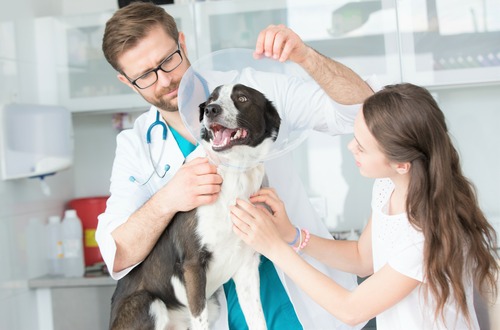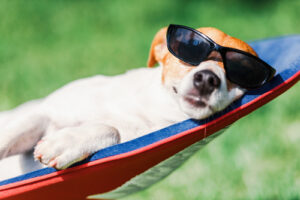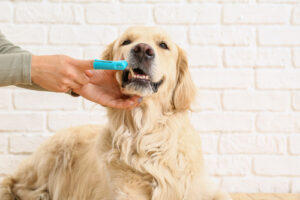After your dog has undergone spay or neuter surgery, one of the essential steps in their recovery is ensuring they don’t disturb the surgical site. A common and effective tool to help with this is the “cone” or Elizabethan collar. In this blog, we will guide you through the process of how to put a cone on a dog, ensuring a smooth and comfortable recovery period. If you have any concerns or need assistance, please call Dix Hills Animal Hospital at (631) 271-8383.
Understanding the Importance of a Cone
The cone, often referred to as an “E-collar” or “pet cone,” is vital for preventing your dog from licking or biting their stitches or surgical site. This simple device can be the key to a speedy and complication-free recovery. It’s designed to be a barrier that keeps your pet from reaching their wounds, which helps prevent infection and re-injury.
Types of Cones
There are several types of cones available, ranging from the traditional plastic cones to more comfortable options like soft cones or inflatable collars. Each type has its advantages and can be chosen based on your dog’s size, breed, and overall comfort.
How to Select the Right Cone
Choosing the right cone for your dog involves considering several factors to ensure it is effective and comfortable. The cone should extend beyond your dog’s nose by about 2 inches, which prevents them from reaching their healing site.
Measuring Your Dog for a Cone
To get the right fit, measure the length from your dog’s neck to their nose and add approximately 2 inches. Also, measure around your dog’s neck to ensure the cone can be adjusted to fit snugly without being too tight.
Step-by-Step Guide on Putting the Cone on
Putting a cone on your dog can seem daunting, but with these steps, you can ensure it’s done correctly and comfortably.
Introducing the Cone to Your Dog
Before you try to put the cone on, let your dog inspect it. Allow them to sniff it and get used to its presence. This can help reduce anxiety associated with wearing the cone.
Securing the Cone
Once your dog is familiar with the cone, gently place it over their head, ensuring it’s not too tight around the neck. Secure the fasteners so that you can fit two fingers between the cone and your dog’s neck, ensuring it’s snug but not tight.
Managing Your Dog’s Daily Activities with a Cone
With the cone on, your dog will need some time to adjust to their new range of visibility and mobility. It’s essential to monitor their activities, especially during the first few days.
Eating and Drinking with a Cone
You may need to raise their food and water bowls to help them eat and drink comfortably. Some dogs might require a bit of practice to navigate feeding with a cone.
Ensuring Comfort During Sleep
Make sure their sleeping area is safe and free from obstacles that could catch on the cone. Soft bedding and a calm environment can also help them settle down with their new accessory.
When to Contact Your Veterinarian
While adjusting to the cone and during the recovery process, keep an eye on your dog’s behavior and the condition of the surgical site. If you notice any redness, swelling, or discharge, or if your dog seems excessively uncomfortable, it’s crucial to contact your veterinarian.
Signs to Watch For
Be vigilant for signs of distress or complications, such as changes in appetite, mood, or activity level. Early detection of potential issues can make a significant difference in your dog’s recovery.
Ensuring Your Dog’s Comfort During Recovery
If you have any questions about how to put a cone on a dog or need further guidance, call Dix Hills Animal Hospital at (631) 271-8383. Our team is here to support you and your pet through the recovery process, ensuring your furry friend returns to their happy, healthy self as quickly as possible.





